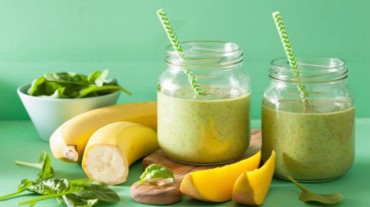
Fasting during the holy month of Ramadan is a wonderful opportunity to cleanse the body. However, many people do not benefit from it, because they fill their dining tables with unhealthy foods that are high in sugar and fat. Fasting removes fats and toxins from the liver and the body. Each meal’s carbohydrates are converted into energy by our body. It starts searching for another source of energy, after six hours of fasting, thereby burning stored fat.
When you eat salty, sugary, or fried food at iftar, you sabotage the detox process and miss out on one of the most significant advantages of fasting.
With Eid approaching, returning to the daily 3-4 meals a day, after observing a month of Ramadan fasting can be challenging for the body.You had been eating sehri in the morning and iftar in the evening for the past month, fasting for nearly 12 hours in between.
Now that you are switching back to your old lifestyle, you’ll need to follow a few guidelines to get your body back on course.
After a month of not eating breakfast, the body will be required to reconfigure to eat it again in the morning. Begin by repeating what you did during Ramadan’s iftar fast. Eat dates with milkshake/smoothie. You can try options from different food categories but do not skip breakfast. However, if you wish to do intermittent fasting (IF) of 16 hours, you can delay your breakfast to sometime later in the day, and get a longer fasting period from the last meal, which was dinner. I would advise IF, under the guidance of a nutritionist and if there has been fat loss in the Ramadan period, extending the religious fast for health benefits can be an option.

Don’t consume fried foods, fast food, junk, outside food, or food that is too fatty or spicy. Ideally this should be followed throughout the year, but it is particularly important after a fast, because your body is more likely to experience bloating, acidity, and
indigestion.
Ensure that you are well-hydrated by drinking plenty of liquids. Whether it’s lemon juice, plain water, kokum sherbet, sugarcane juice, fruit juices and coconut water, all are good to consume. From a hydration perspective, you can also add chia/sabja seeds to plain water. These will also hold you full, and prevent hunger pangs.

Ensure you eat plenty of vegetables, raw salads and whole grains to get enough fibre. You can also consume lean, non-processed protein. Curd and buttermilk should be part of your daily routine. This will not only help with digestion and stomach issues, but it will also help you stay cool in this hot weather.
Treating food/meal as a reward may jeopardise your efforts to develop healthy eating habits in your everyday life. “I have observed fast for a month diligently, now I am free to eat whatever I wish to eat!!”
Fasting for a month doesn’t give you a free license to overeat now. Listen to your body. Practice portion control. If you want to keep your digestive system in a good condition, you can’t overeat even if you’re eating foods that are healthy.
Select Topics of your interest and let us customize your feed.
PERSONALISE NOW
And now, let’s learn how to make this breakfast smoothie:
Ingredients:
350 ml milk
15 dates
2 peeled bananas
¼ cup oats
Almond, walnuts, cashew, mangoes and berries are great as toppings
Preparation:
1. Remove seeds from the dates. You can also use pitted dates, instead of traditional dates. It will save you some time.
2. In a blender, combine the milk, dates, oats, and bananas, and blend well until smooth. Put the mixture in the refrigerator.
3. Pour into the glass and top with nuts, mango pulp and your favorite berries.
This smoothie is an instant source of energy, tastes amazingly good and above all, does not even use any artificial sweet source.